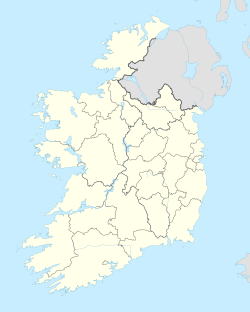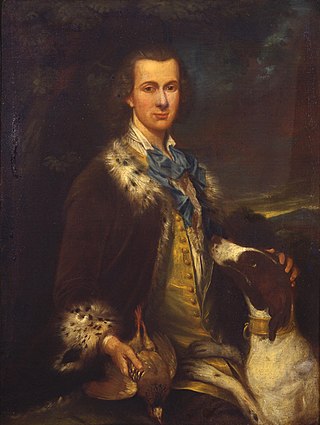
Earl of Limerick is a title that has been created twice in the Peerage of Ireland, associated first with the Dongan family, then with the Pery family. It should not be confused with the title Viscount of the City of Limerick held by the Hamilton family also Earls of Clanbrassil.
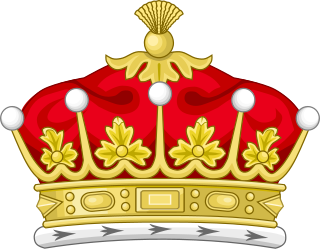
Earl of Bessborough is a title in the Peerage of Ireland. It was created in 1739 for Brabazon Ponsonby, 2nd Viscount Duncannon, who had previously represented Newtownards and County Kildare in the Irish House of Commons. In 1749, he was given the additional title of Baron Ponsonby of Sysonby, in the County of Leicester, in the Peerage of Great Britain, which entitled him to a seat in the British House of Lords. The titles Viscount Duncannon, of the fort of Duncannon in the County of Wexford, and Baron Bessborough, of Bessborough, Piltown, in the County of Kilkenny, had been created in the Peerage of Ireland in 1723 and 1721 respectively for Lord Bessborough's father William Ponsonby, who had earlier represented County Kilkenny in the Irish House of Commons.
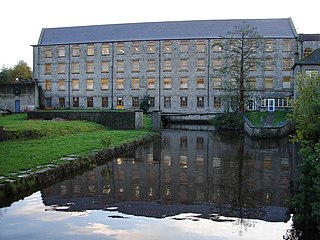
Celbridge is a town and townland on the River Liffey in County Kildare, Ireland. It is 23 km (14 mi) west of Dublin. Both a local centre and a commuter town within the Greater Dublin Area, it is located at the intersection of the R403 and R405 regional roads. As of the 2022 census, Celbridge was the third largest town in County Kildare by population, with 20,601 residents.

George Ponsonby, was a British lawyer and Whig politician. He was Lord Chancellor of Ireland from 1806 to 1807 in the Ministry of All the Talents.
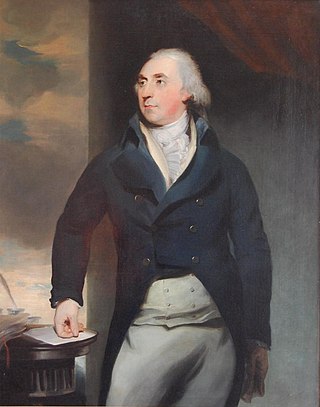
William Brabazon Ponsonby, 1st Baron Ponsonby , was a leading Irish Whig politician, being a member of the Irish House of Commons, and, after 1800, of the United Kingdom parliament. Ponsonby was the son of the Hon. John Ponsonby, the Speaker of the Irish House of Commons and Lady Elizabeth Cavendish, daughter of the 3rd Duke of Devonshire. He was invested as a Privy Counsellor of Ireland in 1784. He served as Joint Postmaster-General of Ireland (1784–1789).

Straffan is a village in County Kildare, Ireland, situated on the banks of the River Liffey, 25 km upstream of the Irish capital Dublin. As of the 2016 census, the village had a population of 853, a nearly two-fold increase since the 2006 census.
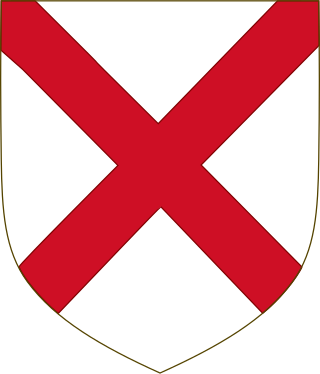
The FitzGerald dynasty is a Hiberno-Norman noble and aristocratic dynasty, originally of Cambro-Norman and Anglo-Norman origin. They have been peers of Ireland since at least the 13th century, and are described in the Annals of the Four Masters as having become "more Irish than the Irish themselves" or Gaels, due to assimilation with the native Gaelic aristocratic and popular culture. The dynasty has also been referred to as the Geraldines and Ireland's largest landowners. They achieved power through colonisation and the conquest of large swathes of Irish territory by the sons and grandsons of Gerald de Windsor. Gerald de Windsor was the first Castellan of Pembroke Castle in Wales, and became the male progenitor of the FitzMaurice and FitzGerald Dynasty. His father, Baron Walter FitzOther, was the first Constable and Governor of Windsor Castle for William the Conqueror, and was the Lord of 38 manors in England, making the FitzGeralds one of the "service families" on whom the King relied for his survival. Some of its members became the Black Knights, Green Knights and White Knights.

Kill is a village and parish in County Kildare, Ireland near the county's border with Dublin beside the N7. Its population was recorded as 3,818 people in the 2022 census.
Ardclough, officially Ardclogh, is a village and community in the parish of Kill, County Kildare, Ireland. It is two miles (3 km) off the N7 national primary road. It is the burial place and probable birthplace of Arthur Guinness, who is said to have returned to the maternal homestead of the Reads at Huttonread to give birth in the tradition of the time.
County Kildare in the province of Leinster, Ireland, was first defined as a diocese in 1111, shired in 1297 and assumed its present borders in 1836. Its location in the Liffey basin on the main routes from Dublin to the south and west meant it was a valuable possession and important theatre of events throughout Irish history.

Oughterard is an ecclesiastical hilltop site, graveyard, townland, and formerly a parish, borough and royal manor in County Kildare, nowadays part of the community of Ardclough, close to the Dublin border. It is the burial place of Arthur Guinness.

Charles William Wentworth Fitzwilliam, 5th Earl Fitzwilliam in the peerage of Ireland, and 3rd Earl Fitzwilliam in the peerage of Great Britain, was a British nobleman and politician. He was president three times of the Royal Statistical Society in 1838–1840, 1847–1849, and 1853–1855; and president of the British Association for the Advancement of Science in its inaugural year (1831–2).
Bishopscourt may refer to:
Castledillon is a townland and former parish on the banks of the River Liffey near Straffan, County Kildare in Ireland.

Whitechurch is a townland, monastic site, and civil parish in County Kildare, Ireland. It is situated between Straffan and Kill, near the M7 motorway.
Castlewarden is a townland, monastic site and former parish situated between Ardclough and Kill, County Kildare just off the N7 in Ireland. The district is home to a golf club and a riding school today.
The Straffan Rail Disaster occurred on 5 October 1853, when a goods train ran into the back of a stationary passenger train one-quarter mile (400 m) south of Straffan station in County Kildare.
Brabazon Ponsonby, 1st Earl of Bessborough, was a British politician and peer. He was the son of William Ponsonby, 1st Viscount Duncannon, and Mary Moore. He was an active politician from 1705 to 1757 in Great Britain and Ireland. He represented Newtownards and County Kildare in the Irish House of Commons. He inherited his father's viscountcy in 1724 and was made Earl of Bessborough in the Peerage of Ireland in 1739. He is buried in Fiddown, County Kilkenny, Ireland.
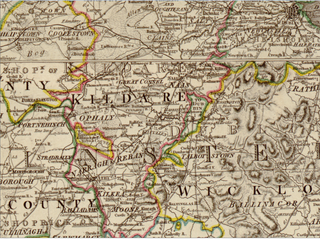
The High Sheriff of Kildare was the British Crown's judicial representative in County Kildare, Ireland from the 16th century until 1922, when the office was abolished in the new Free State and replaced by the office of Kildare County Sheriff. The High Sheriff had judicial, electoral, ceremonial and administrative functions and executed High Court Writs. In 1908, an Order in Council made the Lord Lieutenant the Sovereign's prime representative in a county and reduced the High Sheriff's precedence. However, the sheriff retained his responsibilities for the preservation of law and order in the county. The usual procedure for appointing the sheriff from 1660 onwards was that three persons were nominated at the beginning of each year from the county and the Lord Lieutenant then appointed his choice as High Sheriff for the remainder of the year. Often the other nominees were appointed as under-sheriffs. Sometimes a sheriff did not serve his full term due to death or another event, and another sheriff was then appointed for the remainder of the year. The dates given in this article are the dates of appointment.
